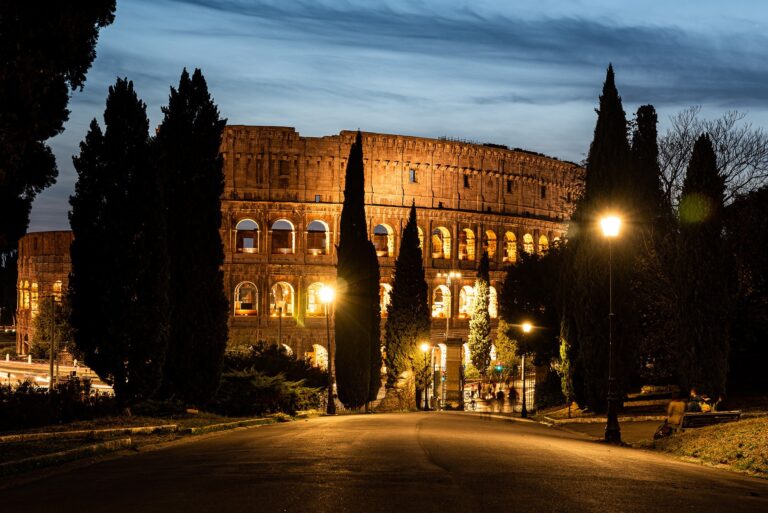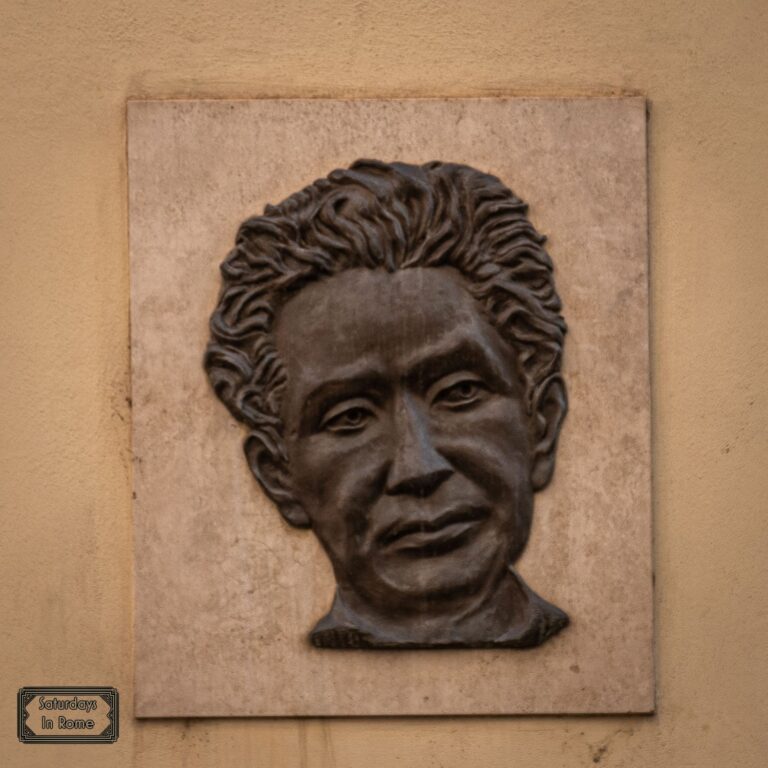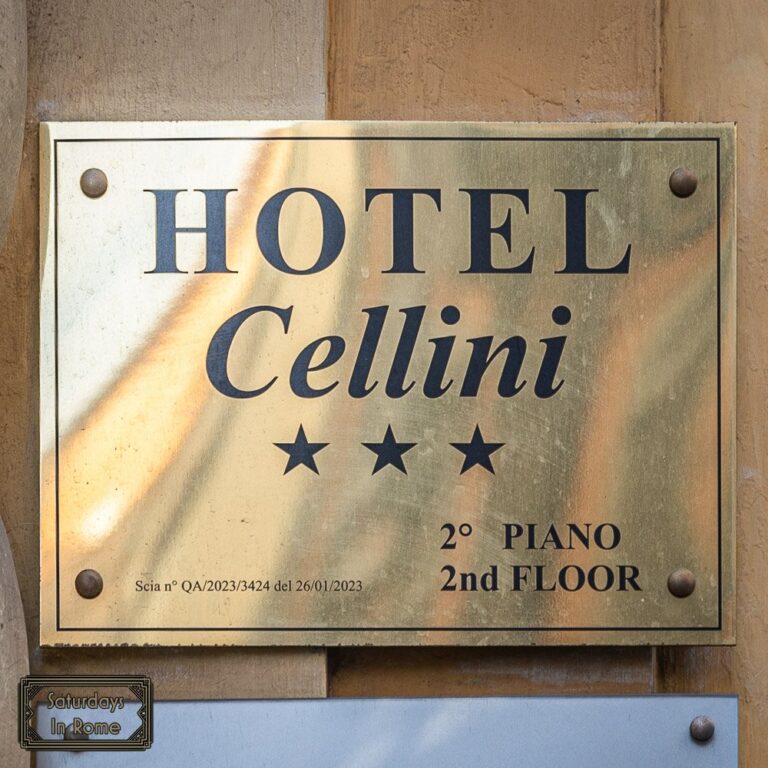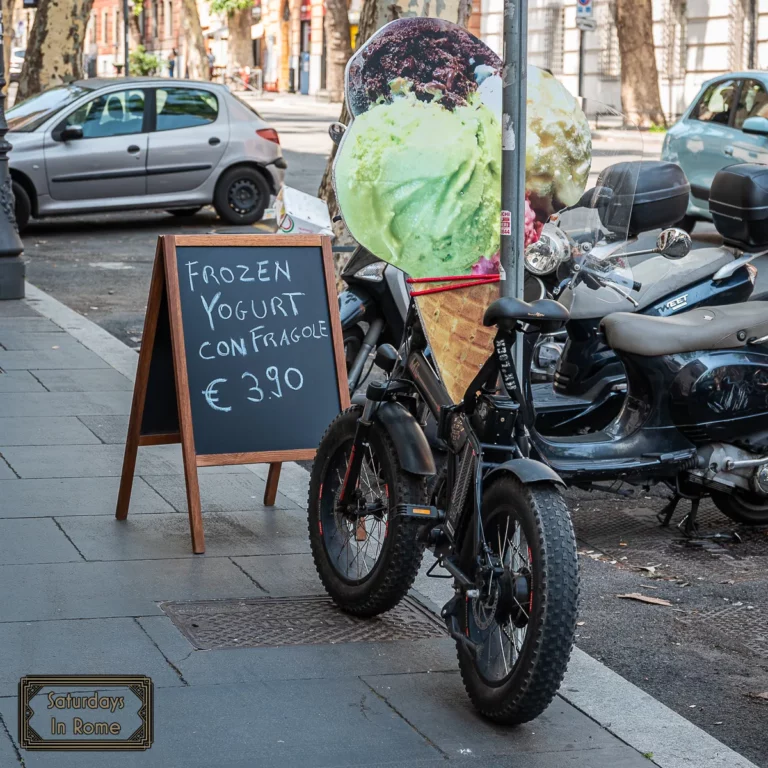These Unique Churches In Rome Are True Hiddem Gems
There are unique churches in Rome, Italy that you might miss but these are hidden gems that you will want to see on your next vacation to the Eternal City.
Amazing and Unique Churches Of Rome
Being the home to Vatican City and having such a long history with the Roman Catholic church, it is no surprise that there are a seemingly endless number of churches in Rome. There is an often cited 900 as the number of churches, which can grow to 1600 if you broaden the definition to include chapels, convents, private residences and palaces.
Mixed in among these churches are some of the most unique you will find in the world. There is a round church, a small church, 3 churches stacked on each other, and an extra amazing church, even though the draw is the stairs.
The Top 3 Unique Churches In Rome
The Round Beauty Of Santo Stefano Rotondo in Rome
The Basilica of Santo Stefano Rotundo (Basilica di Santo Stefano Rotondo al Celio) is a Catholic basilica in the Celio rione of Rome. It was built in the 5th century, it has changed names over the centuries and since its construction it has been the headquarters of the namesake Cardinal. In the 16th century, the Pontifical Germanic-Hungarian College took over management of the church and it is now the national church of Hungary.
The Circular Architecture
The Architecture
The building had a circular plan, originally consisting of three concentric circles:
- A central space with a diameter of 72 ft. was delimited by a circle of 22 columns, on which a circular frame 73 ft. high rests.
- The central part was surrounded by two lower ring-shaped aisles with the innermost having a diameter of 138 ft. was delimited by a second circle of columns connected by arches, now inserted in a continuous wall.
- The outermost one disappeared, it was closed by a low wall.
In the outer ring of the radial colonnades they carved out four rooms of greater height, which inscribed in the circular plan a Greek cross recognizable also on the outside due to the difference in height of the roofs.
The interiors were richly decorated with marble slabs, which includes sections of the original floor that have been found with Cipollino marble slabs and holes on the walls testify to the presence of a wall covering in the same material. In the central space was the altar, inserted in an enclosed space. The colonnade surrounding the central space is made up of 22 columns.
The Bloody Frescoes Of Martyrdom
Each of these graphic frescoes depict violent scenes from the time of the early church, a scene of blood-letting that unfolds around the vast circular space of the basilica in a series. Captions under each image explain who is who, which violent act we are enjoying and whose body we are watching being torn apart before our eyes.
The Martyr’s Church
In one of the scenes, we are faced with the death of Saint Artemius as his body is being crushed between two enormous stones. The smallest details of the saint’s bodily desecration are seen, his eyes popping out of their sockets and his bowels seeping out of his torso. The trees are decorated with amputated limbs, there are piles of corpses being tossed into fiery furnaces and icy lakes, or young women cast into dens of poisonous vipers.
The Smallest Church In Rome, Italy
The chapel of the Madonna dell’Archetto is a small private church in Rome, in the Trevi district and near Piazza Venezia (Via di San Marcello 41b). The official name of the church is “The Church of Santa Maria Causa Nostrae Laetitiae”. For those of us that don’t know Latin, Causa Nostrae Laetitiae means: “The Cause of our Joy”.
Seating In The Smallest Church
This tiny chapel was built in the 19th century to contain an ancient image of the Madonna, who was respected and admired, under a narrow passage arch at Palazzo Savorelli Muti Papazzurri. The building name was changed to “Palazzo Muti alla Madonna dell’Archetto” after the sacred image of the Madonna (Mary, not Ms. Ciccone) placed in a small niche in the alley at the back of the building in 1796 was said to have performed a miracle, moving its eyes repeatedly on July 9, 1796 as if to predict the invasion of France into Rome.
The extraordinary phenomenon was recognized by a papal decree of 1797. The Madonna, officially known as “Madonna dell’Archetto”, had been painted around 1690 by Domenico Muratori for the Marquise Muti Papazzurri who lived in the palace. The Madonna soon became one of the most visited shrines in all of Rome, to the point that in 1850 Count Alessandro Savorelli Muti Papazzurri with his wife Caterina decided to summon the architect Virginio Vespignani to build the neoclassical church of the Madonna dell’Archetto. This chapel is a rare example of neo-Renaissance architecture, rich in marble and metal, and it contains paintings by Costantino Brumidi, the same one who later frescoed the dome of the Capitol in Washington.
The building was inaugurated and opened to the public on May 31, 1851. Currently the sanctuary is one of the smallest churches in Rome.
The Miracle Of The Smallest Church
On July 9, 1796 a miracle occurred when the Virgin moved her eyes and wept in fear of the French invasion of the Papal State, which then took place in 1798. In memory of the famous prodigy but also to place the icon in a more suitable place, a small temple was built by the architect Virginio Vespignani, and it was a beautiful example of neo-Renaissance art.
Narrow Passage To The Smallest Church
This solemn inauguration took place on May 31, 1851 (55 years after this miracle), as the plaque above the entrance describes. The sanctuary was declared a national art monument and is topped by a dome richly decorated with wood carvings, of limited size (which is an understatement) but with a grand appearance. The small nave is embellished with plaster statues by the sculptor Luigi Simonetti depicting angels in the form of sculpted female figures serving as architectural support in the place of a column.
Three Levels Of The Roman Basilica of San Clemente
The Roman Basilica of Saint Clement (Basilica di San Clemente) is a minor basilica dedicated to Pope Clement I. It is located in Rome, not far from the Colosseum, and is noteworthy because of the three levels of the complex that contain the cathedral. The top (present) level is the basilica of Saint Clement and it was built in the year 1100 AD. The next level down, on which the basilica was built, is a 4th century basilica built in a home that had previously been a church as well.
Basilica of San Clemente Courtyard
This had been built on top of a villa from the times of the Roman Republic and had been destroyed during the Great Fire of Rome that occurred in 64 AD. There are varying accounts of this fire because although there were motivations and accusations that Emperor Nero had started the fires so that he could rebuild Rome in his image, he accused the Christian community, which was at the time a religious minority that was in conflict with Roman paganism. This would lead to an increase in persecution of Christians.
Regarding San Clemente himself, little is known about him. According to ancient documents, San Clemente was the third in succession after Saint Peter. San Clemente is honored as a martyr based on documents from the fourth century that tell how he, during the reign of emperor Trajan, was sentenced to exile in the Crimea and forced to labor in the mines.
Climbing Scala Sancta To Reach The Chapel
Although technically this is a chapel, the amazing aspect of this building is that you need to climb stairs to reach the Sancta Sanctorum, the ancient private chapel of the Popes.
The Scala Sancta
The Holy Stairs (Scala Santa in Italian and Scala Sancta in Latin) are a major part of the Pilgrims Trail and they are right across the street from the Basilica of Saint John in Lateran. These are thought to be the stairs that Jesus climbed on his way to his trial during his Passion. The building is called the Pontifical Sanctuary of the Holy Stairs (Pontificio Santuario della Scala Santa), and includes part of the old Papal Lateran Palace. According to Catholic tradition, in 326 AD the staircase was transported from Jerusalem to Rome by the praetorium of Pilate at the request of Saint Helena, mother of Emperor Constantine.
According to the same Catholic tradition, the 28 steps that make up the staircase are exactly the same ones that Jesus climbed several times on the day of his death sentence in the palace of Pontius Pilate. Hence the name of Scala Pilati or Scala Sancta.
Climbing The Holy Stairs In Rome
The Holy Stairs can only be climbed on one’s knees. If you would prefer to walk to the top to see the chapels, there are four additional staircases, two on each side, which are functional and have less historical significance. In the 18th century, the marble stairs were covered in wood to reduce the wear and tear after being significantly worn away by the many pilgrims climbing the stairs over time. Every Friday of Lent it is customary to go up the Scala Sancta on your knees while praying. Climbing the Holy Stairs is an act of devotion to relive the passion of Christ and to ensure plenary indulgence from one’s sins.
The Sancta Sanctorum
The Sancta Sanctorum
At the top of the staircase, protected by a massive metal window grate, is the ancient private chapel of the Popes, at least until the Renaissance. It is the Chapel of San Lorenzo in Palatio, called the Sancta Sanctorum for the many relics that are guarded within. On the wall behind the altar is the image of Jesus depicted sitting on the throne with his right hand blessing and with the Gospel scroll in his left. The image is considered a Acheropìta (in latin), which I just learned means that it is believed that the icon was made without human hands but came into existence miraculously.
More Information On These And Other Amazing Churches In Rome, Italy
If you enjoyed this article about some unique churches in Rome, then you may also want to check out these other articles with more information and other Rome gems:
- The Santo Stefano Rotondo Church In Rome Must Be Seen.
- A Small Church In Rome.
- Three Generations Of San Clemente In Rome.
- Scala Sancta Is A Unique Experience For The Faithful.
- San Saba, Rome Is A Jesuit Basilica You Need To Explore.
- The Enduring History Inside The Pantheon.
- Connect With The Seven Pilgrim Churches Of Rome.
- The Church of Santa Maria della Vittoria In Rome, Italy.
- The Oldest Church In Rome Is Hidden Among The Better Known.
- The Obelisks In Rome Will Bring You Back To Ancient Egypt.
- Egyptian Obelisks In Rome: All That You Need To Know.















